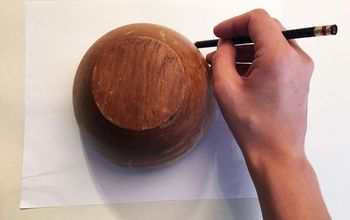How to Paint Galvanized Metal to Create a Rust Look

You don't need to be a chemistry major to learn how to create the chic rust effect popular today in home decorating. Galvanized metal is any kind of metal that has been treated with an anti-rust coating, for use where it might get wet. Creating this look involves taking shiny metal objects, such as a bucket, a tray, or a photo frame, and creating an aged rust effect. The finished pieces fit well in a range of rooms and have a variety of uses. Creating the rust effect with galvanized metal requires few materials, and can be customized depending on how much of a rust look you want for your specific project. The project is inexpensive and can be done quickly and efficiently.
Tools and Materials
- Vinegar
- Plastic bucket
- Towel
- Paint
- Ground cinnamon
- Metal items - such as buckets, trays, photo frames, plant pots, etc.
Step 1: Gather Your Materials
The first step to begin creating the rust effect on galvanized metal is to gather your materials. A large plastic bucket is ideal, as the tub will need to be big enough for the largest piece of fabric or towel to soak in it. You can either soak your fabric together or do it independently. You’ll also need a towel – preferably one that you use for crafting and not one of your best – which you will be soaking in vinegar in the plastic bucket. The fabric will need to completely cover whatever item you're adding the rust effect to. So, you’ll either need a large towel or several smaller ones. I collected the metal items; which included a large metal bucket for ice, a galvanized metal photo frame, a serving tray, and a plant pot. Once you’ve gathered all your materials, you’ll be ready to learn how to paint galvanized metal!
Step 2: Soak Fabric in Vinegar
Vinegar is one of the most versatile materials when it comes to home decoration, and its use in aging galvanized metal shows this versatility. I simply filled the plastic tub with distilled white vinegar and placed the towels into it, allowing them to soak. You only need to leave them for a few minutes, allowing the vinegar to seep into the fabric. Then, you can wring the towel out to ensure there is no vinegar spilled anywhere, and it will be ready to use. Depending on the size of your plastic bucket, you may need to do each piece of fabric separately. Once you have each piece of fabric or towel coated in the vinegar, but not dripping, you’ll need to then wrap the metal you want to create the look on. This is the key to learning how to rust galvanized metal.
Step 3: Wrap the Metal
The key aspect of being able to paint galvanized metal is by to remove the coating that makes it so durable. This then allows the paint to adhere to the metal. For this stage, I wrapped each item with a towel that had been soaked in vinegar. The large bucket required two towels in order to fully cover the areas I wanted, while the smaller items, such as the drinks tray and the photo frame, only needed one. The metal doesn’t need to be wrapped in the fabric for too long. I left it for a few hours in order to fully ensure that the acidity of the vinegar properly interacted with the galvanized coating. You’ll be able to tell if the coating has been removed because the metal will look duller and the shine will have been removed somewhat. The amount of time you leave the metal wrapped in the material will affect the extent of the galvanized rust look.
Step 4: Paint on “Rust”
The final stage, once the metal has been prepared, is to paint on the rust you want. To do this, I used dark-colored paints, and the secret weapon: ground cinnamon. For the large bucket - that could either be a drinks ice bucket or a blanket bucket, I painted the edges brown, where I wanted the rust look to appear. I then wiped away some of the paint, so a finer coating was left. To this, I then tipped on some ground cinnamon and allowed it to dry. I repeated this process until I had the desired look, occasionally swapping to black paint to create a different kind of rust look. The addition of the cinnamon, after it had been wiped away, gave the texture that a rusty bucket might have.
For my drinks tray, which would eventually become a candle holder, I wanted an even rustier look. So, I applied a lot more paint and cinnamon until the entire surface was covered and the tray looked like an antique. I then repeated this with the plant pot and the vase, which both definitely suited the rusty look better.
Admire Your Handywork!
Enjoyed the project?
Suggested materials:
- Vinegar
- Towel
- Metal
Comments
Join the conversation
-
 Karen Beam
on Sep 27, 2021
Karen Beam
on Sep 27, 2021
Love all of these. Trying to collect favorites for decorating a special way when all moved.
-
































Frequently asked questions
Have a question about this project?
Can you use contaminatie and paint on a worden tray?